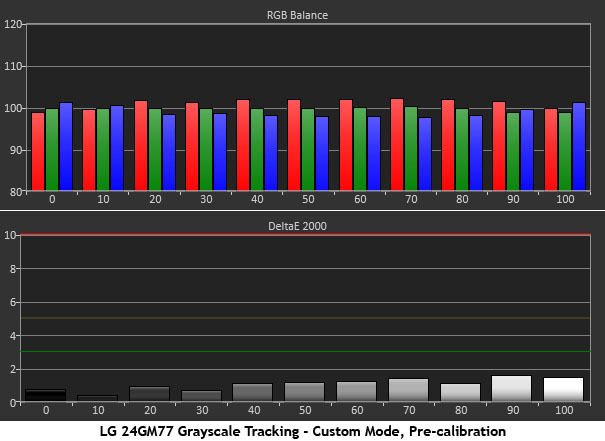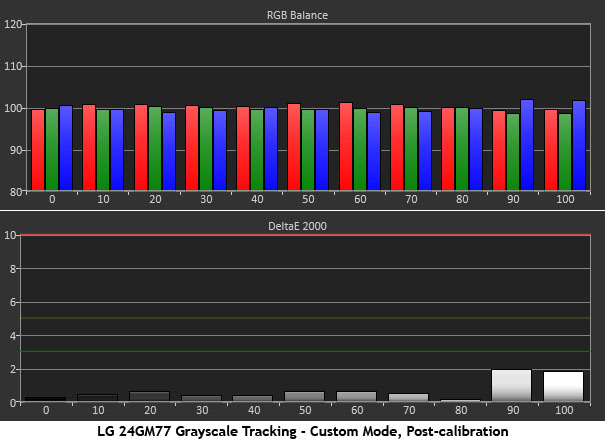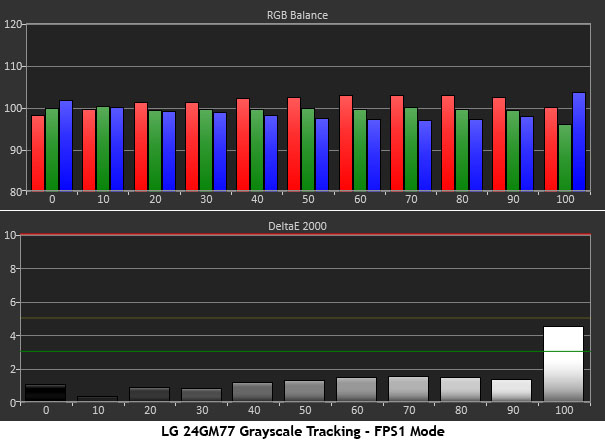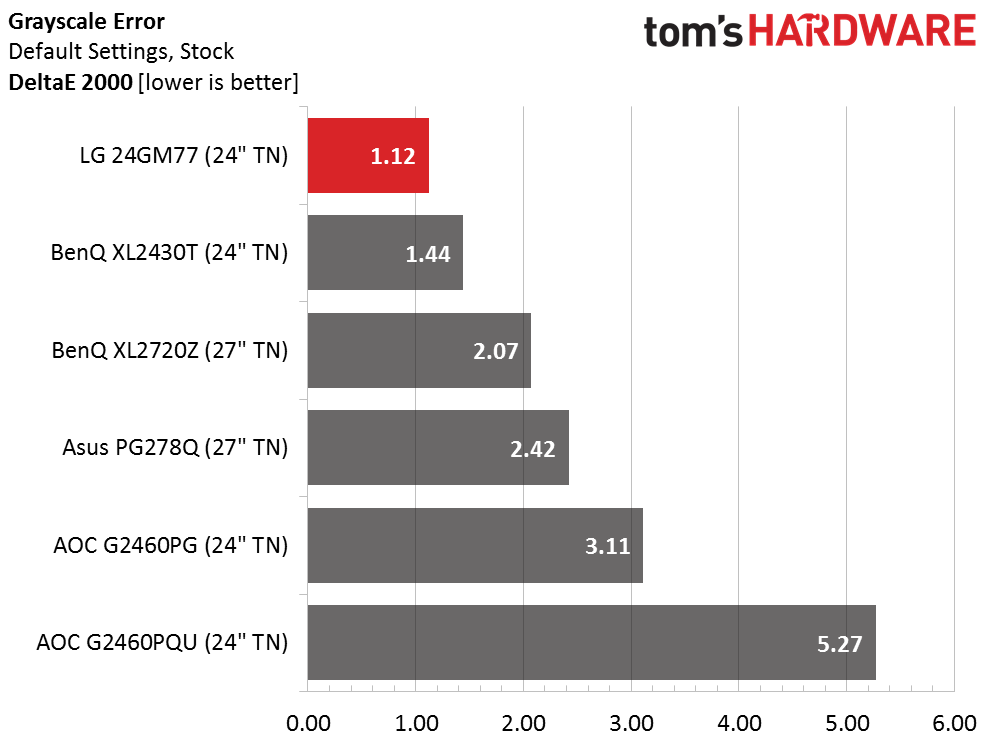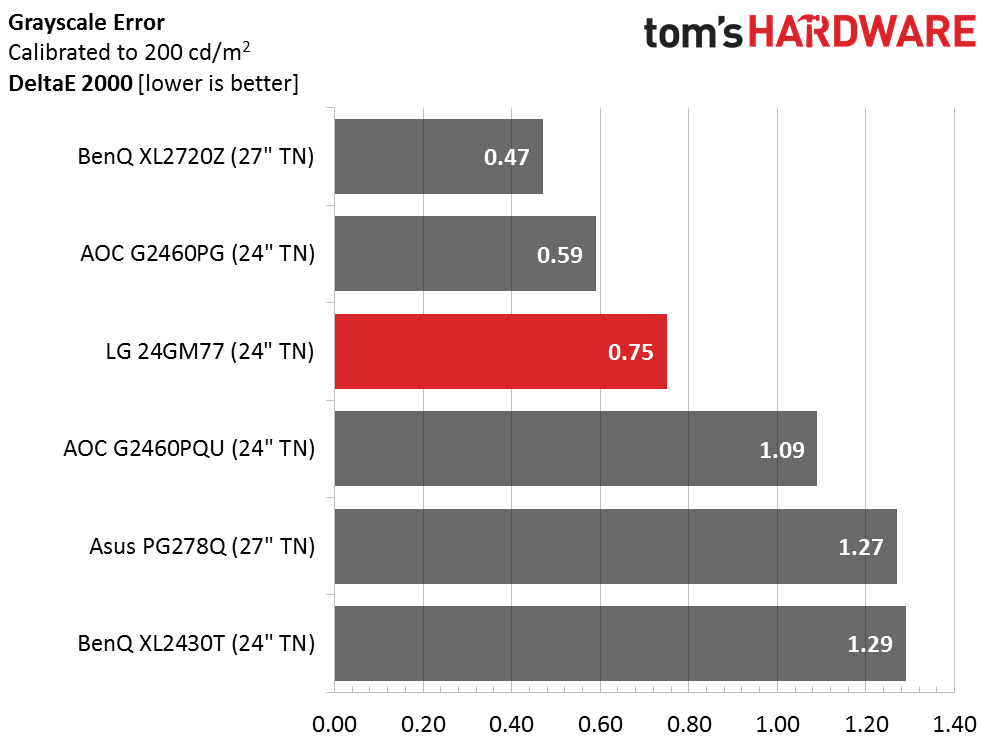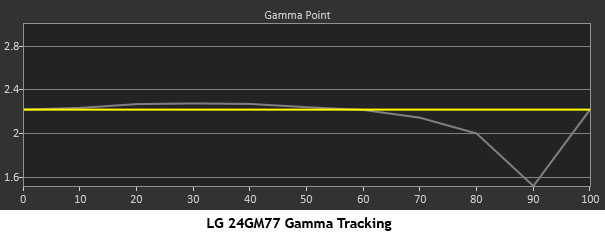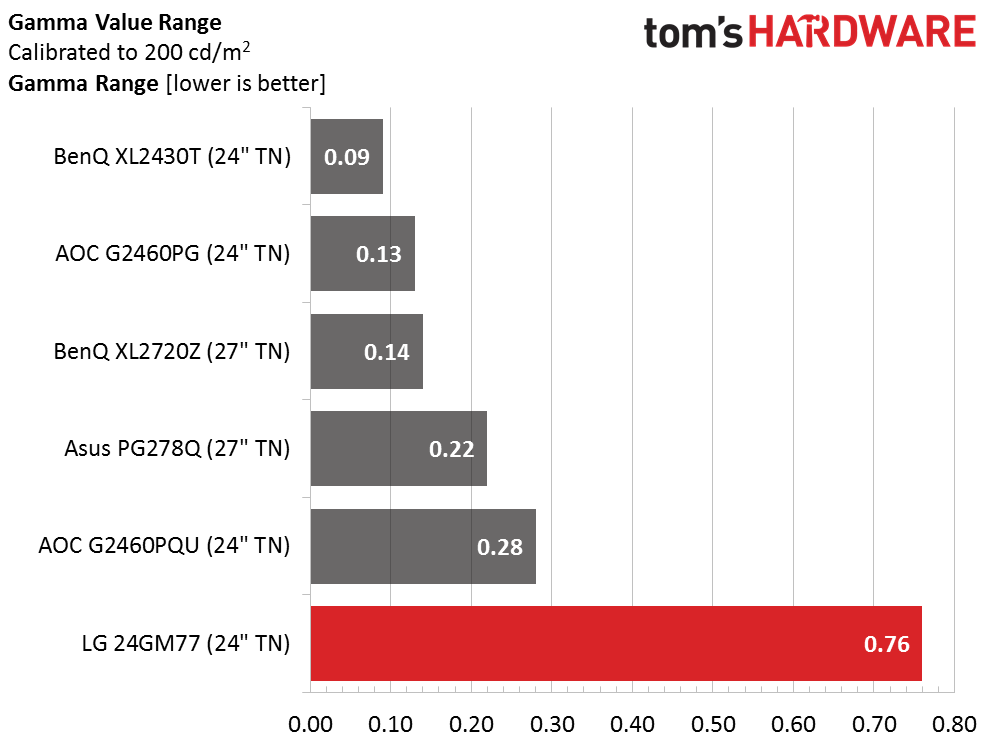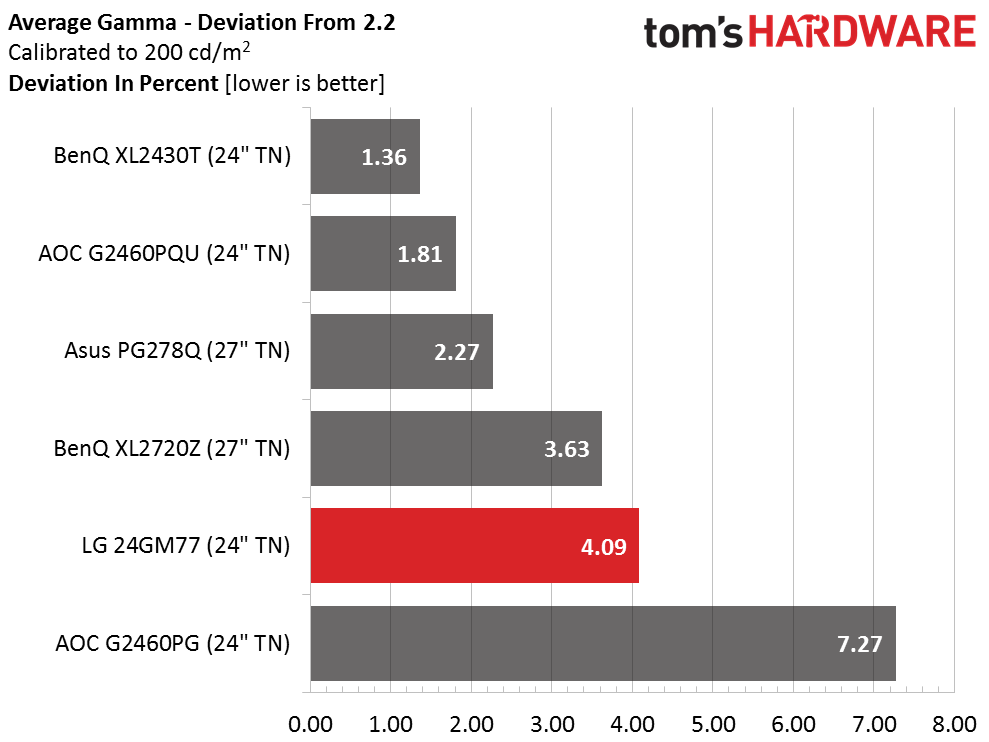LG 24GM77 24-Inch 144Hz Gaming Monitor Review
Why you can trust Tom's Hardware
Results: Grayscale Tracking And Gamma Response
Our grayscale and gamma tests are described in detail here.
We’d like to think our monitor reviews inspire manufacturers to improve their out-of-box accuracy. Indeed, it seems like more of the screens landing in our lab look fantastic at their default settings. The above chart shows a tiny bit of red, but check out the actual error levels – they’re well under the threshold of visibility at 3dE. There is no need to calibrate the 24GM77 or even to change its picture mode from Custom.
We adjusted our sample anyway, making improvements to all grayscale levels except 90 and 100 percent, which rose ever so slightly. Since there’s no reduction in contrast, you might as well calibrate if you have the means.
Once you engage the game modes, accuracy shifts from excellent to merely good. The FPS1 mode shown above is just one example. Aside from a blue tint at 100 percent, grayscale tracking remains solid. Unfortunately, as you’ll see on the next page, color saturation does not fare as well.
Here is our comparison group:
A 1.12dE unadjusted grayscale average is hard to beat. We’ve only measured two professional screens that could do better.
After making slight adjustments to the RGB controls, we realized a .37dE reduction in grayscale error. Since overall contrast only dropped by .07 percent, we’ll call that a win. Yes, this really is a $300 gaming monitor. Bravo LG!
Get Tom's Hardware's best news and in-depth reviews, straight to your inbox.
Gamma Response
Gamma tracking is the only place where the 24GM77 has room for improvement. It’s perfect until the 70-percent level, where it takes an abrupt slide downwards (too bright). It’s not bad enough to crush detail, though bright objects like clouds become a bit flat-looking. It’s a minor criticism and could be fixed with a firmware update.
This is the same FPS1 game mode we measured above. The gamma rides high (too dark) from 50 percent on up, making middle and bright tones look murky. The game modes also engage some rather unattractive edge enhancement, so we prefer to avoid them in our usability tests.
Here is our comparison group again:
The 90-percent gamma value of 1.50 spoils what could be a much better result. In this one metric, the competition is well ahead. Hopefully LG addresses the problem through an update of some sort.
We calculate gamma deviation by simply expressing the difference from 2.2 as a percentage.
Since most of the gamma trace is right on the 2.2 mark, the average value is 2.11, representing a 4.09-percent deviation. In general, image quality isn’t impacted too much, though it could be better in bright content. On the bright side, color and grayscale accuracy are not affected by this.
Current page: Results: Grayscale Tracking And Gamma Response
Prev Page Results: Brightness And Contrast Next Page Results: Color Gamut And Performance
Christian Eberle is a Contributing Editor for Tom's Hardware US. He's a veteran reviewer of A/V equipment, specializing in monitors. Christian began his obsession with tech when he built his first PC in 1991, a 286 running DOS 3.0 at a blazing 12MHz. In 2006, he undertook training from the Imaging Science Foundation in video calibration and testing and thus started a passion for precise imaging that persists to this day. He is also a professional musician with a degree from the New England Conservatory as a classical bassoonist which he used to good effect as a performer with the West Point Army Band from 1987 to 2013. He enjoys watching movies and listening to high-end audio in his custom-built home theater and can be seen riding trails near his home on a race-ready ICE VTX recumbent trike. Christian enjoys the endless summer in Florida where he lives with his wife and Chihuahua and plays with orchestras around the state.
-
Mike Coberly Reply24" TN, 1080p? No variable refresh? No thanks.
so is it a 24" or 27" display?
LG's website indicates that it is indeed a 24" panel, the title is incorrect in stating it is a 27" -
NinjaNerd56 I got an AOC 27 inch display under $300 recently. No SYNC ability, but a really nice device that's excellent with the games I play.Reply
It's GAME mode is good, and I have done zero adjustment beyond that. If it lasts 2-3 years, then I can 'upgrade' at a much cheaper price to whatever sync de jour display I want.
-
JeanLuc For a gaming monitor to be released these days that does not to come with Gsync or Freesync capability is very short sighted by LG. Would the inclusion of a Freesync enabled 1.2a displayport really have delayed or added considerable costs to this monitor, LG?Reply -
Marcus52 This article - seriously? You can't even get the size of the monitor right. And the price isn't anything special for a 24" 144 Hz TN panel, Asus has had one in that price range (under $300) for years now. In my mind these things make the entire article suspect.Reply
